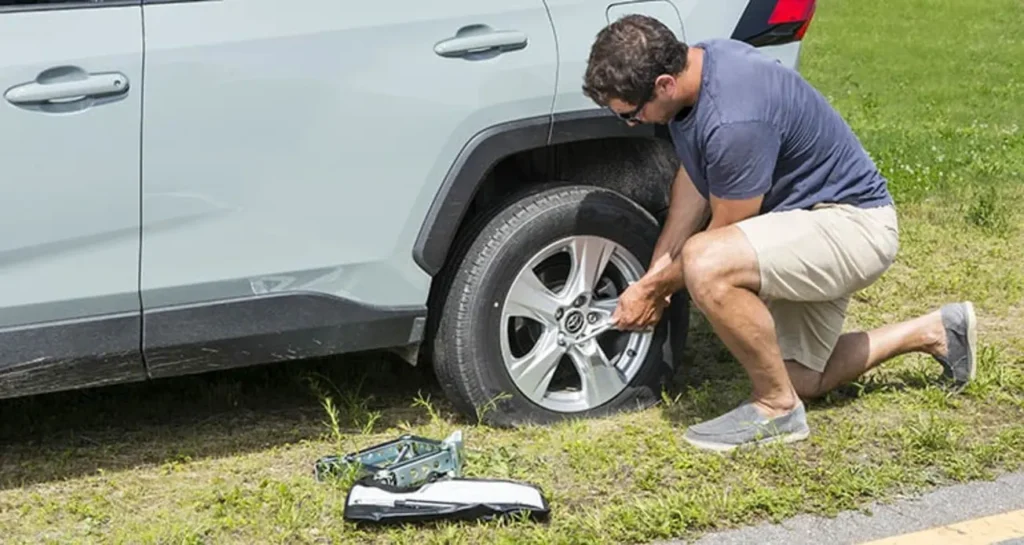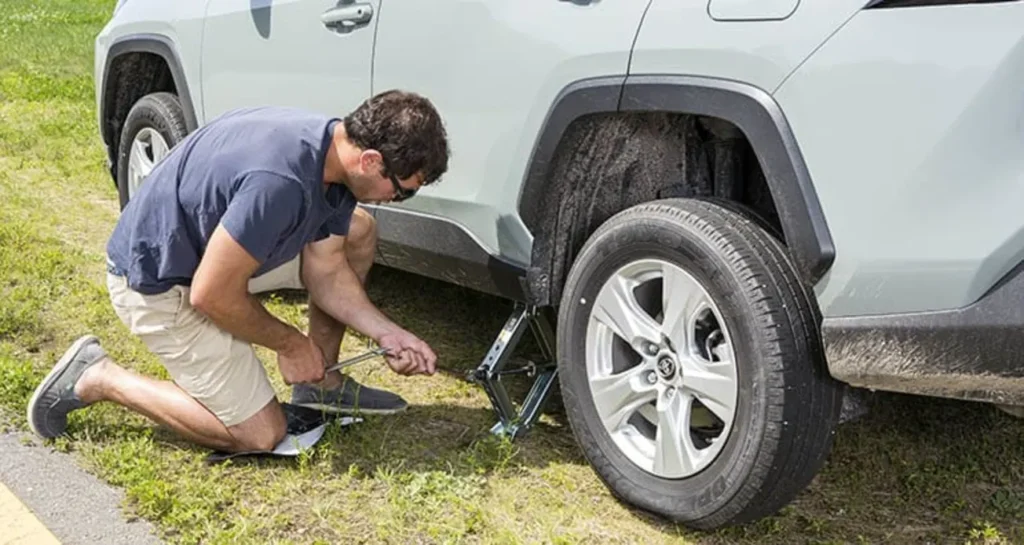How to Change a Car Tire
When an unnerving thumping sound suddenly appears, you may be enjoying your road trip or traveling to work while driving down the highway. You become aware that your tire is flat. Even though getting a flat tire can be very annoying, learning how to change a car tire can help you save the cost, worry, and time involved in waiting for roadside assistance. In this post, we’ll go over how to change a car tire, what to do if your tire blows out, and some tips to help you avoid getting a flat tire repair in the first place.

What to Do If Your Tire Goes Flat
Find a Safe Spot: Pull over to the side of the road safely as soon as you suspect a flat tire. Make sure you are parking on level land, far from any traffic.
Turn on Hazard Lights: To let other drivers know that you are having a problem, turn on your hazard lights.
Gather Tools and Equipment: To repair a flat tire, you’ll need a few basic tools, including a spare tire, jack, lug wrench, and your car’s owner’s manual.
Now, let’s dive into the step-by-step process of changing a car tire:
Identify the Flat Tire: Find the flat tire by looking over your tires. Consult your owner’s handbook if you have any questions.
Loosen Lug Nuts: The lug nuts on the flat tire should be lightly loosened with the lug wrench, but they shouldn’t be totally taken off. When the car is still on the ground, this is simpler.
Jack Up the Car: In accordance with the directions in your owner’s manual, place the jack under your car. Typically, you’ll set it down beneath a solid area of the frame next to the flat tire.
Lift the Vehicle: Utilizing the jack, gradually lift your car off the ground. Make certain that it is raised sufficiently for you to easily replace the spare tire and remove the flat tire.


Remove the Flat Tire: After the car has been elevated safely, take off the loose lug nuts and change the flat tire. Set it apart.
Install the Spare Tire: Push the spare tire onto the hp kiub after carefully lining it up with the wheel studs. To hold the spare tire in position, manually tighten the lug nuts.
Lower the Vehicle: Using the jack, gently lower your car back to the ground.
Tighten Lug Nuts: Tighten the lug nuts in a star pattern while the car is on the ground using the lug wrench. This guarantees uniform pressure. As tightly as you can without overtightening.
Double-Check Lug Nuts: After driving a short distance, recheck the lug nuts to ensure they are still secure.
Stow Your Equipment: Place the flat tire and all the tools safely away. Remember to store the jack safely.
How to Avoid Having a Flat Tire
It is usually preferable to avoid a flat tire than to deal with one while driving. The following advice will help you prevent flat tires:
Regularly Check Tire Pressure: Keep your vehicle’s recommended tire pressure in place. At least once each month and before lengthy excursions, check it.
Inspect Tires for Damage: Check your tires frequently for cuts, punctures, or other indications of wear. Tires that exhibit severe wear or damage should be replaced.
Rotate Your Tires: To maintain even tire wear, adhere to the suggested tire rotation schedule in your owner’s manual.
Avoid Potholes and Debris: Drive carefully, especially when there are bumpy roads, potholes, or debris. Reduce your speed and make an effort to avoid obstructions.
Drive Carefully: Avoid making sudden stops, quick turns, and high speeds because these behaviors might harm your tires.
Replace Old Tires: Tires have a finite shelf life. Even if they still appear good, replace them when they reach the specified age or mileage.
Carry a Spare Tire: Always keep a spare tire and the tools you need to change it in your car.
The ability to change a vehicle tire is an essential expertise that can save you time and hassle in emergency situations. When you come across a flat tire, keep in mind to keep yourself safe by pulling over to a safe spot and utilizing hazard lights. You will quickly be able to get back on the road if you follow the detailed guidelines we have provided.
Preventative actions like routine tire pressure checks, tire inspections for deterioration, and cautious driving can help you completely avoid flat tires. You may lessen the likelihood that you’ll need to stop at the tire shop or change a flat tire Repair by applying these tips and being prepared, which will make your trip less stressful.
